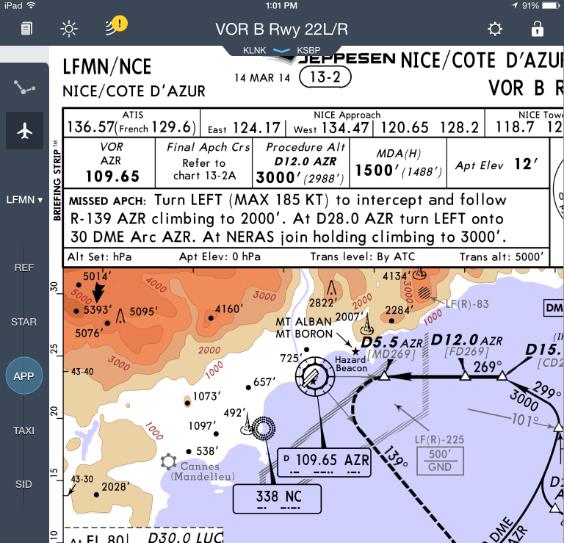A Complete Manual for Conducting International Flight Operations
Transition Altitude / Level / Layer
Transition Altitude, Transition Level, & Transition Layer
Transition Altitude, Level and Layer all refer to when a pilot/aircraft will reference the aircraft’s altitude to a standard datum (i.e. 29.92 in the US) and when the altimeter will be referenced to local pressure whether it be in mmhg or hPA, etc. In the United States the transition level and altitude is always FL180. In other parts of the world, however, the transition level and altitudes will be different. Specific altimetry procedures may be found in ICAO Doc. 4444 Chapter 1.
Determining the Transition Level or Transition Altitude
 The easiest method for determining the transition level or transition altitude is to reference any approach plate for a given airport. Looking at LFMN, the transition level indicates “by ATC” and the transition altitude indicates 5000’.
The easiest method for determining the transition level or transition altitude is to reference any approach plate for a given airport. Looking at LFMN, the transition level indicates “by ATC” and the transition altitude indicates 5000’.
Having the transition level assigned by ATC is very common, but it also complicates a pilot’s procedures because it is easy to misunderstand controllers when they advise of the transition level. Therefore the onus is on the pilot to ask the controller for the transition level if unsure. Transition levels may also be broadcast on the ATIS frequency at the end of the transmission. The transition level is the altitude where the aircraft switches from a standard altimeter setting to the local pressure setting at the airport. More simply, if the transition level is going down, the transition altitude is going up. In Europe the transition levels are commonly around 5,000-6,000 feet. U.S. pilots are accustomed to performing the transition level change and checklists at 18,000 feet, so when new pilots are first introduced to the European environment, it is very easy to feel overwhelmed and busy during the approach and arrival.
The transition altitude on the approach chart at LFMN indicates that the transition altitude is 5000’. So, after the aircraft departs when it climbs through 5000’ MSL, the flight crew shall select 1013 hPa as the altimeter setting. It is ICAO recommended practice to switch from the local altimeter setting to the standard altimeter setting only when climbing through the transition altitude. There are a few countries that take exception to this, mainly in the UK, where they recommend switching to the standard pressure when cleared above the transition altitude. Crewmembers shall review and abide by the country specific procedures.
Determining the Transition Layer
The transition layer is the airspace between the transition altitude and the transition level. It is possible that a controller may assign an altitude within the transition layer (very uncommon and not recommended ICAO procedure). In that case the flight crew shall keep in mind, if the controller states, “climb and maintain flight level 90”, the reference shall be to standard pressure. If the controller states, “climb and maintain 9,000 feet”, the altimetry reference shall be to local pressure.
JOIN THE CONVERSATION

The material contained on this site is to be used for reference only. You should always follow your primary resources first (aircraft manuals, government regulations, etc.).
Savant Aero is no way affiliated with any aircraft manufacturers.

